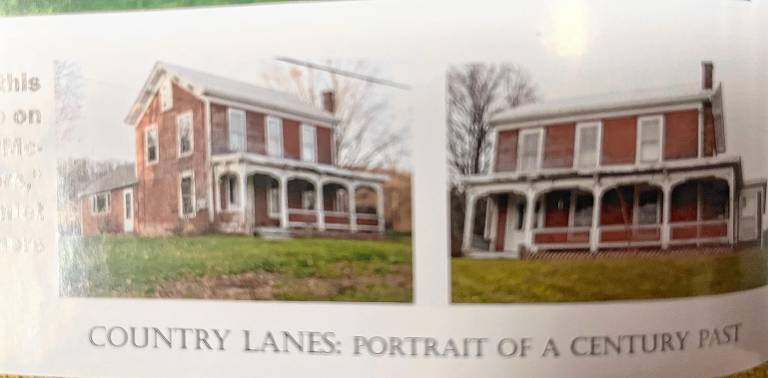

During the Christmas season, I was visiting with a friend in Sussex Borough.
He showed me an old book that he had just purchased from a local bookstore called “New Jersey: A Guide to its Past and Present.”
This book was part of the American Guide series, where writers went through different states on tours describing residents they met during each of the 20-mile-or-so trips. These ventures were done in the late 1930s.
One tour worked its way through Sussex County. The writer stopped along the way at a location, which was painted by local painter Louie Larsen about 1910.
Here is an excerpt from the now out-of-print book.
“SUSSEX, 7.1 m. (450 alt, 1,415 pop.) ... is at the junction with State 23. Between Sussex and Ross Corner the route is an unnumbered, but well-posted, county highway. A crossroads at 8.6 m. is marked by black and white directional signs, below which is a smaller sign reading, “This is McCoy’s Corner.” Most of the farm population for miles around needs no guidance to the white farmhouse behind tall evergreens where William (Bill) Sharpe McCoy has lived for 50 years.
During the last 40 years McCoy has been a horse dealer; he sells about 700 animals a year, not counting trades. He is a short, friendly man, with thin gray hair and a mustache; the trousers of his gray business suit are tucked into black puttees, and he wears over shoes around his stable and office behind the house.
McCoy is his own banker in dealing with the farmers, keeping their notes and his other accounts in a green tin box that he carries out to his stable office every morning. If he needs cash, he can take a note on a horse to the Sussex bank and get it discounted. “But they wouldn’t discount a note on an automobile,” he says, “because there’s too much depreciation.” The best money he ever made was during the years that he ran a fertilizer factory.
A relative, a veterinarian, kept him posted on mortally ill animals over a wide area. McCoy’s follow-up system was successful, for he seldom hauled away a dead horse without selling a live one to the bereaved farmer.
For six years Mc Coy was pianist for the Masons, and his violin has furnished many tunes for country dances. The violin bears a printed Stradivarius label along with the words, “Made in Germany”; a New York dealer once offered him $2,000 for it, but McCoy wouldn’t sell. South of McCoy’s Corner the highway, here paved with macadam, swings through a valley, past occasional ponds and icehouses. Westward are the Kittatinny Mts., part of the Appalachian Range.”
We are thankful for the opportunity to look back at people in Sussex County a century ago.
This firsthand description reinforces the ways of our ancestors and the importance of farming and horses.
Bill Truran, Sussex County’s historian, may be contacted at billt1425@gmail.com